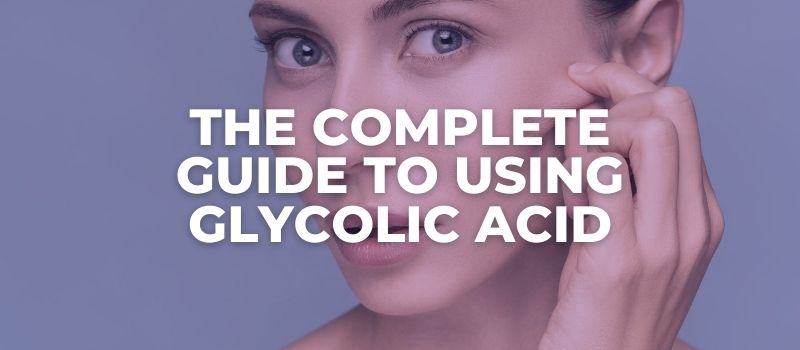What is Glycolic Acid?
Glycolic acid is a powerful alpha-hydroxy acid (AHA) derived from sugarcane. It is revered in dermatology and skincare for its exfoliating, anti-aging, and skin-renewing properties. With the smallest molecular size among AHAs, glycolic acid penetrates deeply into the skin, effectively dissolving the bonds between dead skin cells and encouraging cell turnover.
This ingredient is widely used in facial peels, cleansers, toners, serums, and moisturizers, and is suitable for all skin types—especially for those battling dullness, acne, pigmentation, and fine lines.
How Glycolic Acid Works on the Skin
When applied topically, glycolic acid breaks down the “glue” that binds together dead skin cells on the outermost layer of the skin (stratum corneum). By promoting gentle yet effective exfoliation, it allows new, healthier skin cells to emerge.
Core Mechanisms:
Exfoliation: Removes dead skin cells to reveal brighter skin
Cellular regeneration: Accelerates skin renewal for smoother texture
Collagen stimulation: Boosts collagen synthesis, improving skin elasticity
Enhanced absorption: Improves penetration of other active ingredients
The result is visibly clearer, smoother, firmer, and more even-toned skin.
Top Benefits of Glycolic Acid
1. Exfoliates and Renews Skin
By loosening the bonds between dead skin cells, glycolic acid removes surface debris and reveals a more radiant, fresh complexion. This helps reduce roughness and flakiness, especially for those with dry or combination skin.
2. Fades Hyperpigmentation and Dark Spots
Glycolic acid is effective at diminishing melasma, sun spots, acne scars, and uneven pigmentation. Through regular use, it disrupts excess melanin production and evens out skin tone, giving the skin a brighter appearance.
3. Combats Acne and Congestion
Thanks to its deep-penetrating ability, glycolic acid unclogs pores, reduces blackheads and whiteheads, and curbs the development of acne. It also possesses mild antibacterial properties, further aiding acne-prone skin.
4. Minimizes Fine Lines and Wrinkles
Glycolic acid stimulates the production of collagen and elastin, proteins that give skin its structure and firmness. With consistent use, it smooths fine lines and reduces the depth of wrinkles, contributing to a youthful complexion.
5. Improves Skin Texture
Glycolic acid enhances skin smoothness and minimizes the appearance of enlarged pores, acne scars, and rough patches. It’s especially beneficial for those with post-acne texture irregularities.
Types of Glycolic Acid Products and Their Uses
1. Cleansers
These are ideal for daily maintenance and gentle exfoliation. They help remove oil, dirt, and dead skin without stripping moisture.
2. Toners
Glycolic acid toners prep the skin for serums and moisturizers by rebalancing pH and clearing out any lingering impurities.
3. Serums and Creams
These deliver higher concentrations of glycolic acid and are ideal for targeted treatment of pigmentation, aging, or rough skin. Use them 2–3 times a week for best results.
4. Facial Peels
For more intensive treatment, glycolic acid peels offer a deeper exfoliation that can resurface skin, improve clarity, and stimulate collagen. They range in strength from 10% to 70% and should be used with caution, especially in higher concentrations.
How to Incorporate Glycolic Acid Into Your Skincare Routine
Step-by-Step Routine:
Cleanser: Use a mild glycolic cleanser if you’re new to chemical exfoliants.
Toner: Apply a glycolic acid toner 2–3 times a week.
Serum or Cream: Follow with a targeted serum or cream with 5–10% glycolic acid.
Moisturizer: Seal in hydration with a gentle, non-comedogenic moisturizer.
SPF: Always wear broad-spectrum sunscreen (SPF 30+) during the day to protect new skin.
Safety Tips and Precautions
While glycolic acid is safe for most skin types, overuse or incorrect usage can lead to irritation, dryness, or sun sensitivity.
Precautions to Take:
Start with lower concentrations (5-10%) if you have sensitive skin.
Use glycolic acid at night to minimize UV sensitivity.
Avoid combining with retinol, vitamin C, or other exfoliants unless advised.
Patch test before use to avoid adverse reactions.
Always use sunscreen the next day to prevent hyperpigmentation.
If redness or excessive peeling occurs, discontinue use and consult a dermatologist.
Who Should Use Glycolic Acid?
Glycolic acid is suitable for:
Aging skin seeking improved firmness and wrinkle reduction
Acne-prone skin needing unclogged pores and decreased inflammation
Oily skin types battling excess sebum and congestion
Dull or dry skin needing exfoliation and glow
Hyperpigmented or uneven skin tones
Those with rosacea, eczema, or hypersensitive skin should consult a professional before using glycolic acid regularly.
Glycolic Acid vs. Other AHAs and BHAs
Understanding how glycolic acid compares to other exfoliants helps in selecting the right one for your skin goals.
| Ingredient | Type | Molecular Size | Best For |
|---|---|---|---|
| Glycolic Acid | AHA | Smallest | Aging, pigmentation, overall glow |
| Lactic Acid | AHA | Larger | Sensitive skin, hydration |
| Mandelic Acid | AHA | Very large | Gentle exfoliation, sensitive skin |
| Salicylic Acid | BHA | Oil-soluble | Acne, oily skin, clogged pores |
Glycolic acid is often the most potent exfoliant among AHAs, but it’s important to rotate or combine acids carefully under professional guidance.
Best Practices for Storing Glycolic Acid Products
To preserve efficacy:
Store in a cool, dark place
Keep the container tightly sealed
Avoid exposure to direct sunlight and heat
Check expiration dates as older products may lose potency and stability.
Top Glycolic Acid Products to Try
1. The Ordinary Glycolic Acid 7% Toning Solution
Budget-friendly, effective toner for brightening and smoothing skin.
2. Pixi Glow Tonic
Gentle 5% glycolic formula, perfect for daily exfoliation.
3. Paula’s Choice Skin Perfecting 8% AHA Gel
Lightweight serum that refines texture and fades discoloration.
4. Drunk Elephant T.L.C. Framboos Glycolic Night Serum
High-end, potent blend of AHAs and BHAs for advanced skin renewal.
5. Mario Badescu Glycolic Foaming Cleanser
Ideal for weekly exfoliation without over-drying the skin.
Final Thoughts: Why Glycolic Acid Deserves a Place in Every Skincare Routine
Glycolic acid is a dermatologist-recommended, results-driven ingredient for those seeking to improve skin texture, clarity, and youthfulness. Its ability to penetrate deeply, exfoliate effectively, and stimulate regeneration makes it a staple in any high-performance skincare regimen.
From addressing acne and pigmentation to enhancing glow and reducing fine lines, glycolic acid offers visible transformation with consistent use. Paired with proper sun protection and a thoughtful routine, it can completely revitalize your complexion.


















